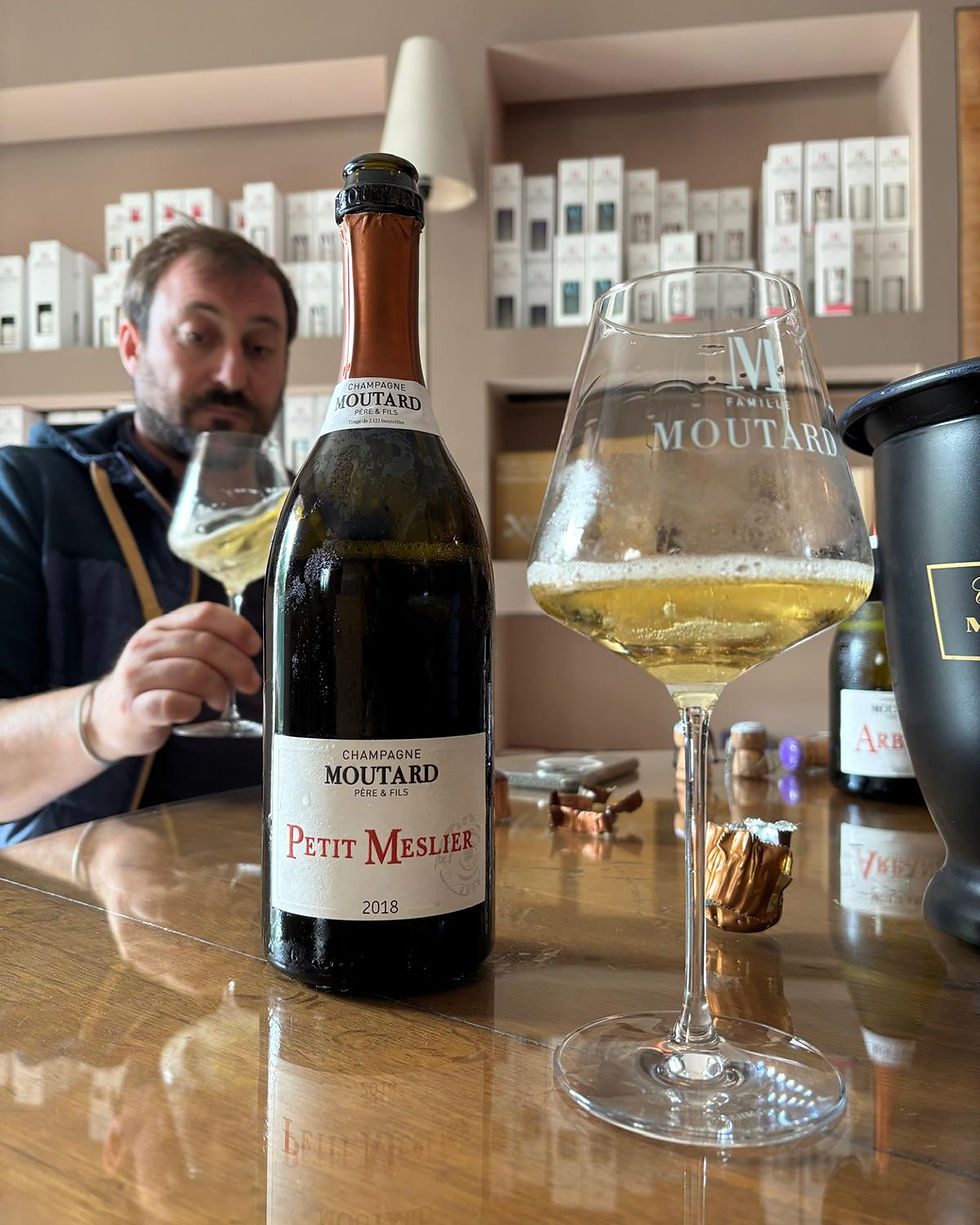The Magic of Meunier with Champagne Eric Taillet
- Lucy Edwards

- Apr 27, 2024
- 4 min read
Updated: Jun 24, 2024
Nestled in the heart of the Marne Valley, the Taillet house introduced its first bottles to the world in 1961. Today, under the stewardship of Eric Taillet, the fourth generation, the house stands firmly committed to its philosophy of vineyard management rooted in environmental sustainability and harmony with nature.
For Eric Taillet, there is but one priority: to harvest grapes of exceptional quality for the creation of extraordinary champagne highlighting the most champenois of grapes: Meunier. He is so passionate about the grape that he founded the Institut Meunier. I sat down with Eric and daughter Léna during their recent visit to Singapore, to talk all things Meunier.

Do you remember your first glass of champagne?
My earliest memory of tasting our first glasses of champagne, was along time ago but already pure Meunier! I remember, around the age of five, during a family meal organised by my mother after Sunday mass, the whole family was gathered. The aperitif was, of course, our Meunier champagne. My older sister and I were impatient to have lunch and, more importantly, to leave the table to play, but the meal was long, and our irritation was growing, perhaps due to the champagne at aperitif which felt like it dragged on forever. Once the meal was over, everyone went out into the garden, and after running around the table like racers, we decided to gulp down the remaining glasses of champagne left on the table! The effect was almost immediate: my sister fell asleep on the floor, perhaps a little tipsy. The punishment was fitting, but the memories are still very strong.
What ignited your passion for Meunier?
I like complicated stories, and Meunier has long been seen as the underdog of Champagne. Back in the XVIth century, over 18,000 hectares were planted with Meunier which was the large majority of the region. Today we are down to about 14,000.


The Meunier passion runs in the family, and I caught the bug very early when working with my father and grandfather in the vines. 85% of our 6 hectares is planted in Meunier, and only one of our cuvées has 10% Chardonnay. So to say we are passionate about it is an understatement! We also have some Pinot Noir vines but we sell that to another house. The exceptional thing about our vineyard is that we have very old vines, with the oldest dating back to 1902. Our terroir of Baslieux-sous-Chatillon has yielded high quality and generous harvests, with even the oldest vines producing over 10 tones per Meunier per hectare. Meunier has many attractive qualities, including the fact that budburst is latest of the three, making it less prone to frost damage. It is very resistant, and ripens fastest, so in general will be harvested about eight days before the other two grapes. And of course, it thrives in the clay rich soils of the Vallée de la Marne, even on North facing slopes with little sun exposure.
My philosophy towards this grape can be summed up a French nursery rhyme: Meunier tu dors, meaning, Meunier go to sleep. It needs minimum intervention both in the vineyards and in the winery, and that is how approach it with organic viticulture and by keeping the lees static in either stainless steel, barrels or even wine globes. It will always be the best way to show the suppleness and diversity of this grape.
I have spent a lot of time researching the grape, all the way back to the XIVth century, and I am also quite enamored by the almost extinct "Meunier Fumé", which exists on a single plot in Champagne, with wild plantings in Normandy.

You're using the term "Meunier" rather than "Pinot Meunier". Can you explain why this is now the preferred name?
According to some of the most in depth studies, Meunier is a chimera of Pinot Noir from Burgundy. This is very different from Pinot Gris and Pinot Blanc, which could be considered subject of Pinot Noir, and therefore still have very similar genetic material. In any case, Meunier is now completely detached from Pinot, and can stand in it's own right. The vines look different, grapes look and taste different and the juice is much lighter than Pinot. I am a firm believer that Meunier is a dark skinned white wine grape, and has an incredibly important role in Champagne. It has its own unique identity and when the Comité Champagne.
Have you ever considered planting the forgotten varieties of champagne?
We actually have 3 of the four forgotten varieties planted on our land! In the early 200s we saw the potential for Arbane and Petit Meslier which are varieties with high acid. They were ripped out of most of the Marne vineyards because they didn't ripen. Today it is a different story.
A few years ago, I also planted a small parcel of these grapes complantée, to recreate a champagne like in the old times, and to create some experimental cuvées. This also increases biodiversity, which is a key pillar of our ethos.

What does the future hold for Champagne Eric Taillet?
I will contunie to share my love for Meunier around the world, and in the vineyard I am working on increasing biodiversity through agroforesty projects in the vines. But most importantly I am working with my two children to pass down the family legacy. Dylan is in charge of the vineyards and winery and Léna is the face of our champagnes, bringing them to customers all over the world.





.jpg)















Comments